
Singapore vs Hong Kong: artists rate them on freedom, cost of studios and how easy it is to get their work shown
Four Singapore-based artists who’ve worked in or regularly visit Hong Kong discuss the pros and cons of both places for their profession – and dispel a few myths
It was the dawn of a new millennium. The whole world was having a nervous breakdown about the Y2K bug, and Hong Kong and Singapore were bitten by the art bug.
The two former British trading ports turned regional economic powerhouses woke up to the fact that the arts could add gravitas and encourage a creative economy that could trump original equipment manufacturing. Museums and performance venues of ambitious scale were inaugurated, and the business of art ramped up with more fairs, galleries and auction houses opening.
Singapore art scene losing ground to Hong Kong and Southeast Asia, says Art Stage Singapore founder
But there was a key element missing from the two places, and one that still is: a large and diverse output of artwork. They each boast their fair share of home-grown artistic talent considering their populations (7.5 million in Hong Kong and 5.6 million in Singapore), but they lack the clout of New York, London and Berlin, which pull in artists like flocks of homing pigeons. As their cultural ambition grows, both will increasingly compete to lure international artists, makers and curators.
So how do Hong Kong and Singapore stack up – not for millionaire artists represented by multinational galleries, but for less established artists trying to make a living? The Post asked Mona Choo, Claire Deniau and Wei Leng Tay, three formerly Hong Kong-based visual artists now living in Singapore, and Yeo Shih Yun, artist and owner of a Singapore art space who visits Hong Kong regularly, to rate the two cities on three factors.
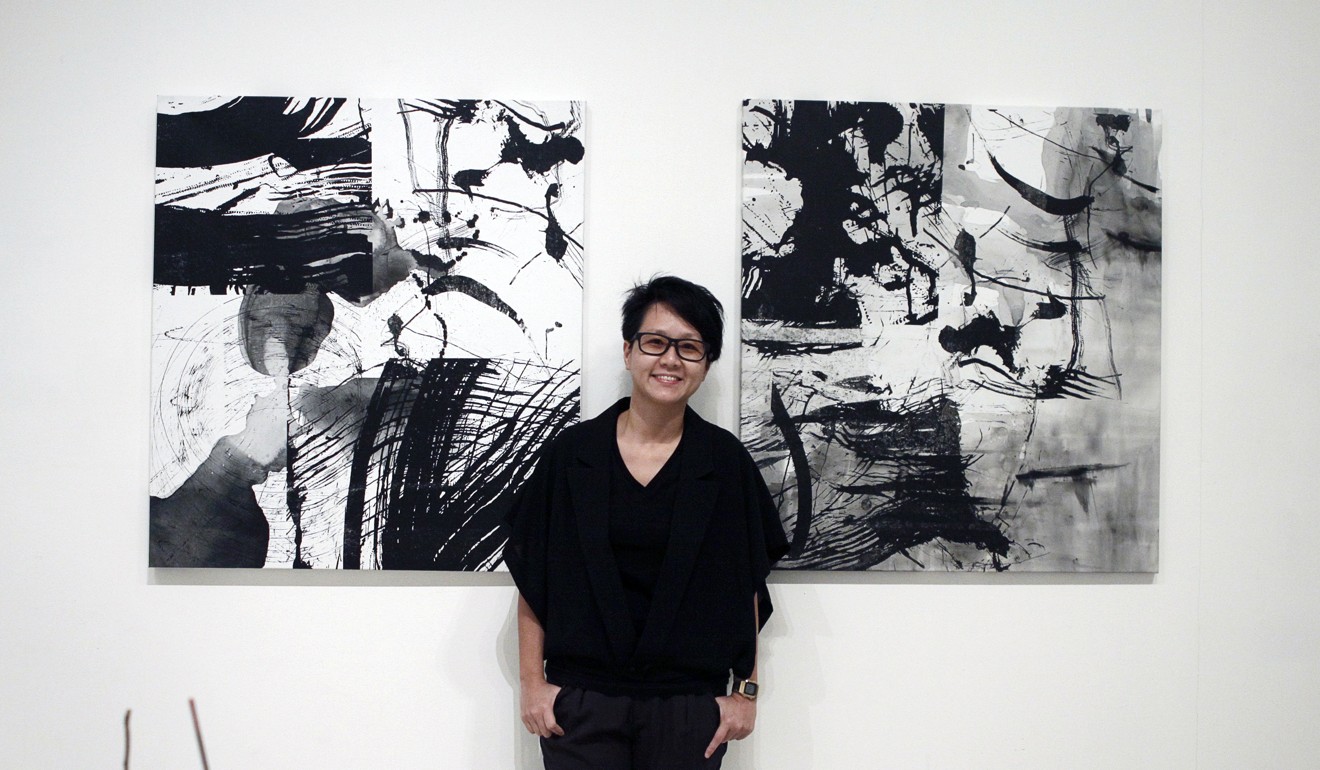
1. Cost and availability of studios
Struggling artists struggle more in two of the most expensive cities in Asia than elsewhere. But Singapore, 65 per cent the size of Hong Kong, is generally more affordable.
French painter Deniau lived in Hong Kong from 2014 to 2017 and never managed to find an affordable studio. Now she has a bright workspace in Singapore’s Kallang Sector that costs S$650 a month (US$495).
“Having a studio makes such a difference to my practice. I am a lot more productive than when I worked from home in Hong Kong,” says Deniau, who moved to Singapore last year partly because she desperately needed a proper studio space.
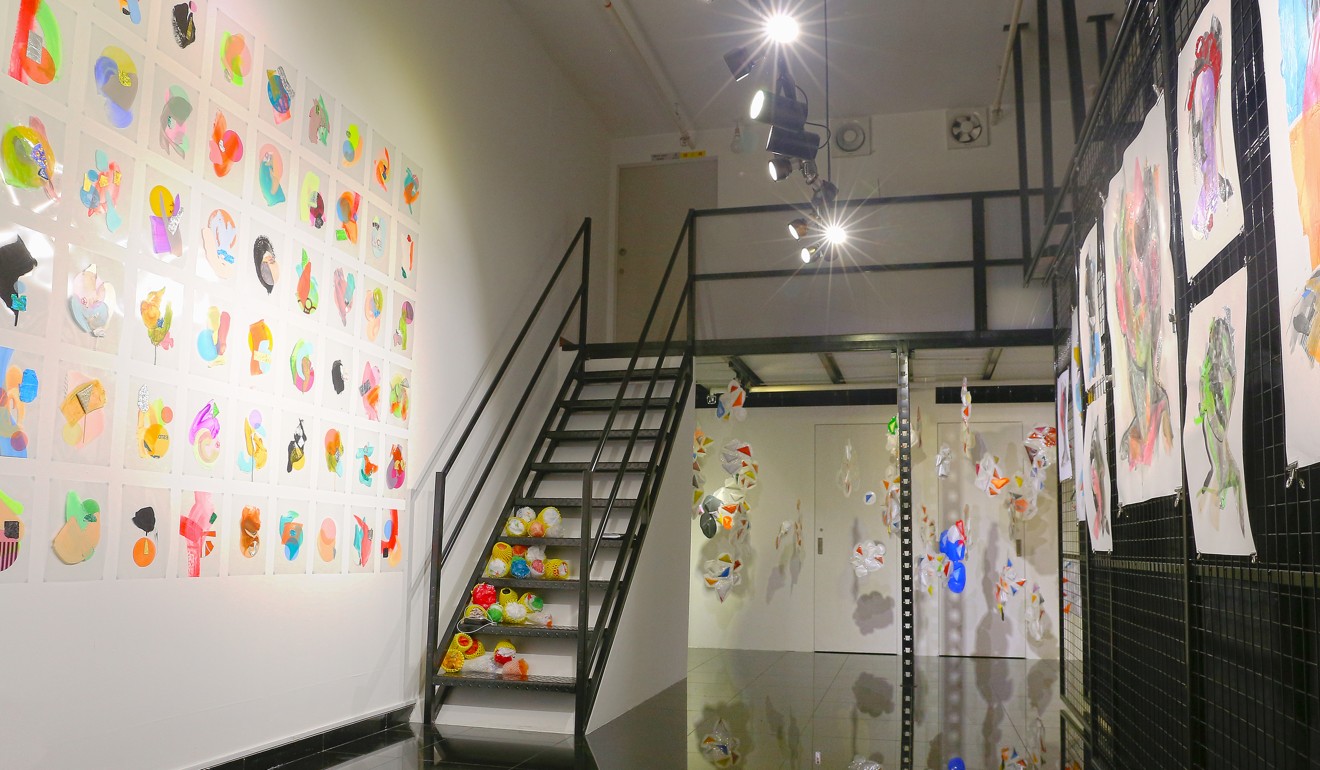
Her landlord is Yeo, an ink practitioner whose own struggle to find space spawned an independent business, called Instinc, which presents exhibitions and runs studios and art residencies.
“I came back from studying at the San Francisco Art Institute in 2002 and wanted to show my work. I couldn’t afford the minimum S$2,000 that venues were charging for exhibitions so I decided to start my own space. My first was a 400 sq ft unit on the fourth floor of a walk-up that cost S$750 a month,” she says.
Now Instinc’s main venue is a centrally located loft space just above the Clarke Quay MRT station that Yeo and her mother bought in 2009.
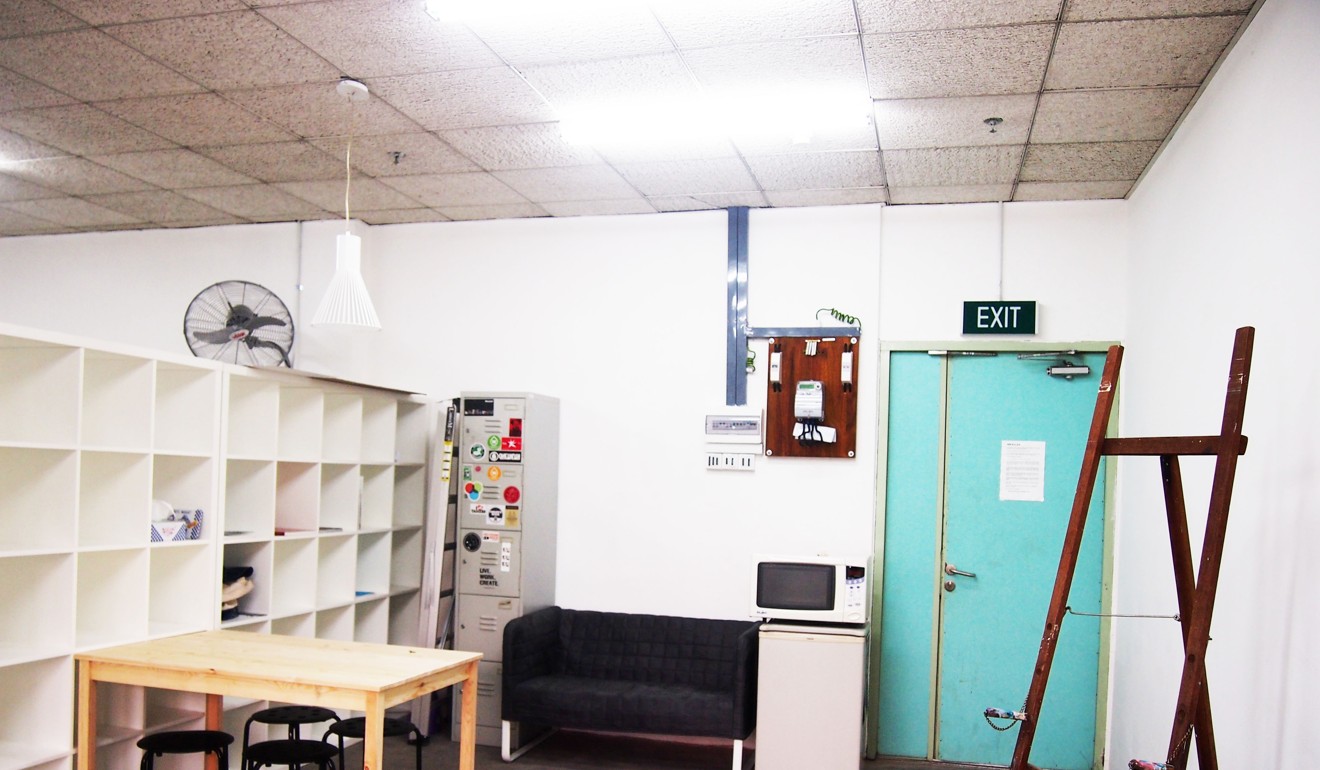
“It is the first Small Office Home Office (Soho) property in Singapore. It is perfect for our residencies since artists can legally stay there,” she says.
Having a studio makes such a difference to my practice. I am a lot more productive than when I worked from home in Hong Kong
In 2011, she rented additional space in the less salubrious, industrial district of Kallang Sector to create more studios, and has her own in a business block in Clementi. The rent for that 1,000 sq ft space is just S$2,000 a month.
It is hard to imagine a business like Instinc surviving in Hong Kong’s cutthroat property market. But Hong Kong’s bigger area means less expensive options exist on the city’s outskirts. The going rent in Fo Tan Art Village in the New Territories is HK$11 to HK$12 per sq ft, so a 350 sq ft studio costs HK$4,500 (US$575) a month.
Singapore artist uses Straits Times to illustrate distortions of news media
Fresh graduates have an easier time finding subsidised studios than their Singaporean peers. At the Jockey Club Creative Arts Centre in Shek Kip Mei, in urban West Kowloon, a 300 sq ft space costs just over HK$2,000 a month for those who qualify.
Also, the Arts Development Council (ADC) is expanding its Artspace model from Wong Chuk Hang to factory buildings in Kwun Tong, East Kowloon, this year, and opening a new arts centre in the old Aberdeen Fire Station, on the south side of Hong Kong Island, some time around 2022. The National Arts Council in Singapore has a similar arts housing scheme, but demand far outstrips supply.
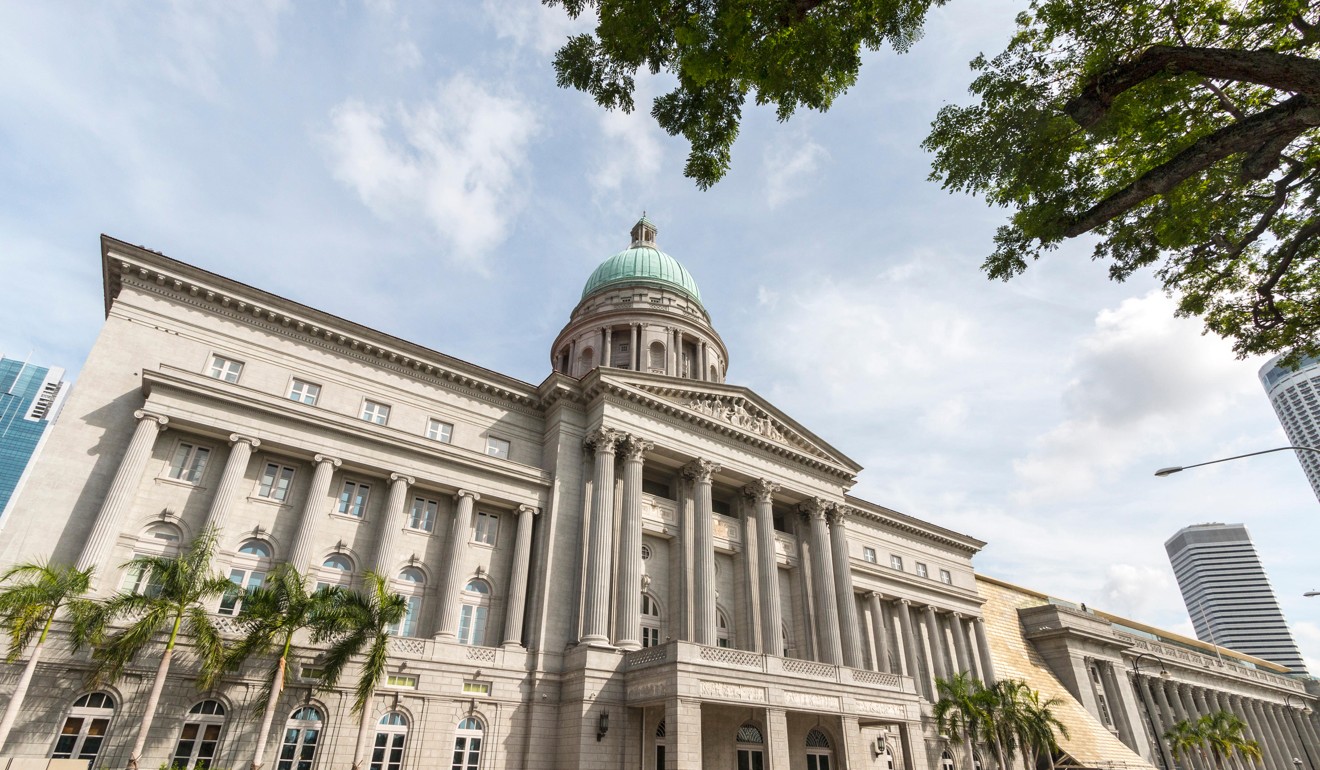
2. Getting your work seen
Both the ADC in Hong Kong and the National Arts Council (NAC) in Singapore provide crucial funding and support for a local art scene that is easily overshadowed by bigger neighbours. Hong Kong artists have often complained about the amount of paperwork required for ADC grants, but at least they don’t have to apply for an exhibition licence.
In Singapore, NAC grants for an exhibition are subject to the Info-Communications Media Development Authority’s approval of all the artwork in advance. Apart from crushing artistic expression, the requirement adds significantly to the time and costs of mounting a show.
On the commercial side, artists in both cities struggle to find dealers to promote them, as most galleries sell art made overseas. Hong Kong is by far the larger market, but it isn’t necessarily easier for artists. Two we spoke to have had better luck with Singapore galleries.
How to become an artist in Hong Kong, city short on space to work and big on making money from art?
Choo started in printmaking but has branched out to more conceptual, multimedia work in recent years. She had a peripatetic childhood as the daughter of a Singapore diplomat and has continued to move a lot as a grown-up. Since 2000, she has lived in Britain, Hong Kong (from 2007 to 2012), Australia and, since 2017, Singapore.
“My work is not very commercial, and I haven’t really been in a place long enough to establish myself. But Vera Ong, the gallery owner, took a chance on me and took my work to Singapore Art Stage [an art fair] in 2015 while I was living in Hong Kong. That was a great confidence booster.”
Deniau also had her breakthrough after moving to Singapore.

“I was in a great exhibition in Hong Kong [the One Belt One Road Visual Arts Exhibition at Sotheby’s in 2016] and I made great contacts. But I did not find any gallery in Hong Kong that would work long term with me. They tend to be more interested in Chinese artists because mainland China is their biggest market. Now, I am represented by Singapore’s Intersections Gallery,” she says.
I prefer Hong Kong. I like the Cantonese culture and the sense of humour
The fact that Essilor, one of the world’s biggest glass lens makers, is collaborating with her on an art installation of paintings and glass might have been an extraneous factor that convinced the gallery to take her on, but in general, she thinks Hong Kong’s high rents put more pressure on galleries to be profitable and to play safe.
Still, all four artists say that Singapore is a small market and they plan to continue exhibiting in Hong Kong for greater exposure.

3. Freedom and inspiration
Hong Kong wins hands down in this category, for now; the recent proposal to enact a national anthem law risks bringing Singapore-style censorship to Hong Kong. In 2003, artist Justin Lee was banned from exhibiting Flag, a work that featured hundreds of Chinese “double happiness” characters making up the red section of the national flag – just one example of art banned in the name of flag desecration.
A city that frowns on public dissent and is notoriously fond of “bans” negates the artistic spirit, Choo says.
“Hong Kong has an edge that Singapore doesn’t have. Singapore is sterile. It is too clean, and artists definitely have more freedom to make social commentaries in Hong Kong,” says Choo, who moved back to Singapore after living abroad for 15 years to spend more time with her parents and for her husband’s career.
How has art fared in Hong Kong under China’s rule? The scene is thriving, but some artists see – or fear – censorship
Not everyone agrees. Tay, a photo, audio and video artist who explores issues of displacement and national identity, recently moved back to her home city after 15 years in Hong Kong, and finds it a great source of inspiration.
“Singapore is definitely not boring. You just need to dig. A lot of people are falling through the cracks,” she says. She also thinks that its more restrictive environment could, perversely, encourage better work.
Compared with blatantly political art in Hong Kong, art that questions the government’s narrative in Singapore has to be indirect. “Art can get more interesting because it is more nuanced,” she says.
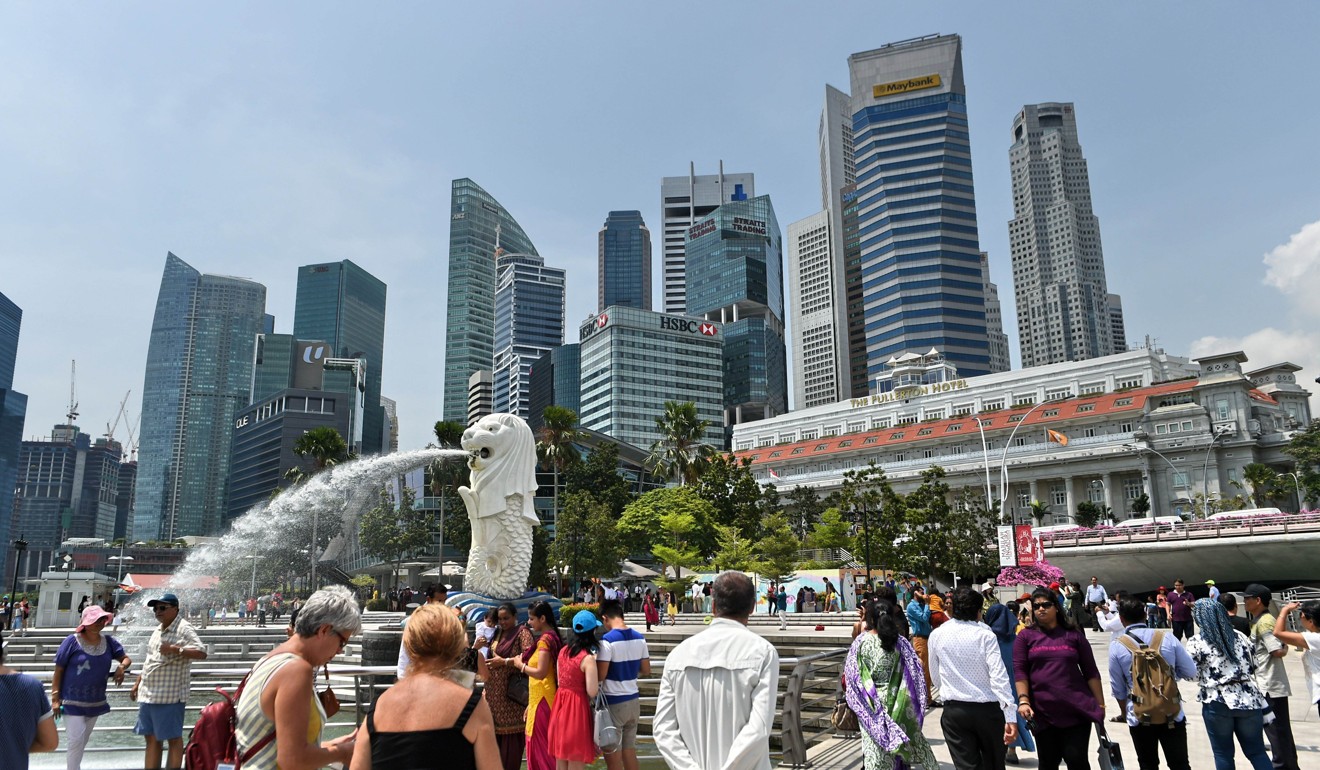
4. Last words
The air is cleaner and the quality of accommodation is much better in Singapore. Deniau, whose husband suffered acutely from Hong Kong’s pollution, says she now lives within walking distance of the Botanical Gardens and has also found it easier to tap into the local artist community as a mature, non-Chinese artist.
She also says art supply shops, such as Art Friend and Straits Art, are much better than the options available in Hong Kong.
“In a way, all my dreams have come true in Singapore. Life is much easier. But Hong Kong has this energy … that gives you the sense of being empowered. Even though I had no studio space and no gallery, I never gave up.”
Singapore is definitely not boring. You just need to dig. A lot of people are falling through the cracks
Choo says: “I prefer Hong Kong. I like the Cantonese culture and the sense of humour.”
Tay says there are things she misses about Hong Kong. “Hong Kong people are rude but I am used to how it works. In Singapore, people don’t problem-solve for you. When my printer stopped working the other day, I ended up calling the Hong Kong helpline and the woman there just helped me fix the machine over the phone.”
For Tay and many other artists, the desire to make a difference is often strongest in a place you call home, and that is not an energy easily transferable to another city.
“In Hong Kong, I felt like a third party despite living there for so long. I have no vested interest in the city even though I observed first hand a lot of the recent developments, such as the Occupy movement. With Singapore, it still feels like home even though I was away for 20 years. I feel strongly about how Singapore can be better,” she says.

